Are you a Quiet Speculation member?
If not, now is a perfect time to join up! Our powerful tools, breaking-news analysis, and exclusive Discord channel will make sure you stay up to date and ahead of the curve.
Between the Platinum fee changes, the ensuing #PayThePros fallout, and Wizards' subsequent retraction, it's no wonder most Magic and Modern players have lost sight of Aaron Forsythe's seminal article, "Where Modern Goes from Here," released that same week. Talk about getting overshadowed. I can only imagine how the poor documentarians behind Enter the Battlefield felt when the #PayThePros din drowned out their Twitch premier.
Although the Platinum wrongs have since been righted, I'm still seeing plenty of Modern commentary and punditry that is totally out of dialogue with Forsythe's game-changing article. It's hard to go about "Fixing Modern" if we're ignoring Wizards' best efforts to do just that. Today, following my last article focusing on the "Pro Tour Ends" side of Forsythe's announcement, we're switching gears to the "New Beginnings," taking a close look at his long-overdue, but graciously welcomed, format guidelines.
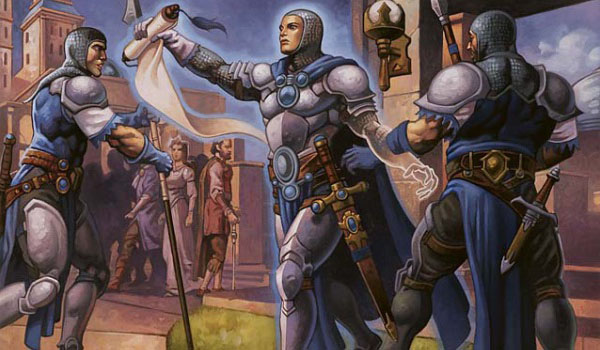
I've already criticized Wizards for their poor communication and unclear definitions, and I was thrilled to see Forsythe address both points in his April 24 piece. I don't know if "Fixing Modern" had anything to do with the decisions outlined in Forsythe's article, but needless to say, I'm elated we finally have nine format guidelines to inform popular understanding. My goal today is to explore these guidelines as related to broad format management issues such as the banlist, reprints, the metagame, and similar topics. Forsythe has given us one of the most significant pieces of Modern literature since LaPille's inaugural articles. We have a responsibility to understand and cite it in the future, and today's article will help us accomplish that.
[wp_ad_camp_1]
Sources and Review
This latest installment in the "Fixing Modern" column is a Part 2 follow-up to my Pro Tour-centric Part 1. Before we get started, take a few minutes to re-read Part 1 and to re-read Forsythe's actual article. If you remember both, feel free to skip ahead to the next section. If not, the articles (Forsythe's much more than mine) are worth the second read-through.
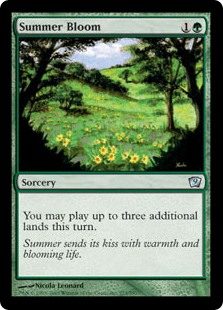 I trust the Modern Nexus readership to venture into the big, scary Magic world armed to the teeth with information. This can take the form of metagame breakdowns, card-prevalence benchmarking, historical analyses, close-readings of important Modern policies, and much more. In all those cases, I don't necessarily need our Nexus audience to champion a single opinion (unless that opinion is "the Bloom ban was justified"). Rather, I want our readers to bring a data-driven and evidence-informed perspective to their gaming communities. This means citing sources, challenging unsourced facts and opinions, and trying to elevate the conversation everywhere through quantitative and qualitative datapoints.
I trust the Modern Nexus readership to venture into the big, scary Magic world armed to the teeth with information. This can take the form of metagame breakdowns, card-prevalence benchmarking, historical analyses, close-readings of important Modern policies, and much more. In all those cases, I don't necessarily need our Nexus audience to champion a single opinion (unless that opinion is "the Bloom ban was justified"). Rather, I want our readers to bring a data-driven and evidence-informed perspective to their gaming communities. This means citing sources, challenging unsourced facts and opinions, and trying to elevate the conversation everywhere through quantitative and qualitative datapoints.
Going forward, Forsythe's nine format guidelines are going to be critical determinants of format policy and direction. Whether you agree with my take on them or draw different conclusions entirely, "Fixing Modern" is doing its job if it keeps readers in close conversation with the actual evidence and source material. So take one last close-read of Forsythe's article, especially his "What we want Modern to be" section, and get ready to familiarize yourself with Modern's newly minted mission.
Framing Format Guidelines
In my experience, only a Sith (and Modern/Magic players) think in absolutes. A new set is either busted or Commander and Limited garbage. A new policy is either the Magic apocalypse or the second-best thing to Reserved List abolition. Certain Modern colors or strategy are either banworthy Tier 1 oppressors or unplayable Tier 4 jank. Although we can find middle ground on some issues (David's beloved Merfolk seem to be fair to almost everyone), most Modern opinions, especially those discussed online, veer too far in either extreme.
Introducing his "What we want Modern to be" section, Forsythe encourages us to jettison this black-and-white mentality. It is critical to remember this framing as we unpack the different guidelines, lest we falsely confuse these general principles for hard rules:
"I am frequently asked what we want Modern to be as a format. My answers to these questions should be seen as guidelines that we use to help our thinking internally, but they are not infallible policies. Should players' attitudes toward the format change over time, we're likely to adjust our guidelines as well."
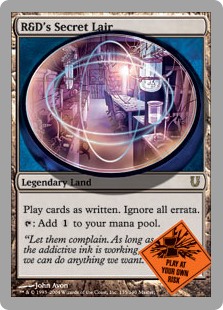 "Not infallible policies?" I can already see eyes rolling at this fluffy "mission." I get it. I'm a statistician and, much to my wife's dismay, I can be a fan of rigid, uncompromising, formulaic rules. Part of me wants Forsythe to just go out there and reveal R&D's secret, immutable protocols so we can chisel them all in stone tablets on our local gaming store's wall. That said, I'm also a social worker, a middle manager, and a husband, which gives me a deep appreciation for the importance of uncertain, flexible, and nuanced policies and approaches. You probably have the same appreciation from your own walks of life, or just from being human. As much as I love my data tables, most issues are too complicated and messy for the "infallible policies" every mathematician covets. That includes managing a complex entity like Modern.
"Not infallible policies?" I can already see eyes rolling at this fluffy "mission." I get it. I'm a statistician and, much to my wife's dismay, I can be a fan of rigid, uncompromising, formulaic rules. Part of me wants Forsythe to just go out there and reveal R&D's secret, immutable protocols so we can chisel them all in stone tablets on our local gaming store's wall. That said, I'm also a social worker, a middle manager, and a husband, which gives me a deep appreciation for the importance of uncertain, flexible, and nuanced policies and approaches. You probably have the same appreciation from your own walks of life, or just from being human. As much as I love my data tables, most issues are too complicated and messy for the "infallible policies" every mathematician covets. That includes managing a complex entity like Modern.
Based on this, we need to understand Forsythe's nine guidelines as the loose and fallible policies they are. We also should not hold this against Wizards in any way. For me, this fluidity suggests a mature management approach which reflects Modern's and Magic's complexities. Could this be interpreted as a corporate double-speaking disclaimer, loathed by Internet commentators and Bernie supports everywhere? Sure, but that doesn't categorically sink Forsythe's entire presentation. Even if there's a bit of back-covering going on, this disclaimer also underscores how format guidelines must be evolving principles which change as players and the game change too. Forsythe says as much at the close of his Modern section:
"There's room for interpretation in many of those statements—intentionally—but this paints a clearer picture of how we see Modern."
This is the kind of informed and sophisticated approach we should expect and want from any major organization.
The Power Nine (Guidelines)
With Forsythe's framing in mind, we can now dive into the format guidelines themselves, reading between the lines to talk about what these parameters mean for major Modern issues. For each guideline, I'll present the text itself, make a general appraisal of its intent, and then conduct a brief analysis on any of three dimensions important to high-level Modern health, management, and policy:
- Banlist application: The Eldrazi in the room for most people---how does the guideline inform future bans and unbans?
- Prices and availability: From its birth, Modern was made to address availability issues. Where applicable, does the guideline relate to topics such as reprints, prices, card-availability, supplemental products, etc.
- The metagame: Some guidelines points to a certain metagame vision. How can we understand that vision from the guideline?
If the guideline doesn't speak to one of these categories, I'll leave it out for that particular sub-section. Also, if I missed some critical area, feel free to nudge me in the comments about the omitted piece. Assuming I've hit the most important areas, let's jump right in with Forsythe's (obligatory) starting point: "Modern should..."
1. Be a fun way to play Magic (first, and easy to forget, but very important!)
When I first read Forsythe's article, I sensed we were getting a disclaimer about Modern being fun. It's no surprise this was the opening guideline, just as it's no surprise Forsythe quoted it again, almost verbatim, in the "So what is Standard?" follow-up section. Don't read too much into this point---it's practically mandatory for a discussion of Magic or any game. That said, the notion of Modern being "fun" is likely to show up in numerous other domains.
 Banlist: preserving fun
Banlist: preserving fun
It's tempting to assume every unfun Modern card should get axed. There's a Blood (Moon)-thirsty contingent of Modern personalities who want Blood Moon, Ensnaring Bridge, and even Lightning Bolt banned whenever they get a platform to shout from. That's a gross misreading. Remember: Wizards is a global brand and almost assuredly cares about net fun, not how much individual fun the one Hypergenesis lover isn't having. Based on that, bannings will still have non-arbitrary criteria such as Top 8 prevalence, MTGO and format-wide shares, and turn four rule violations. Think of these benchmarks as objective indicators of a subjective concept like "net fun." Unfun cards break those rules. Fun ones don't. Similarly, if a currently-banned card is unlikely to promote net fun, it's staying on the list. By contrast, cards that might improve Modern could be released. All that said, this isn't a radical reinterpretation of current banlist policies, so don't bet on any major changes beyond the pace of change getting much slower.
- Metagame: uphold diversity!
Wizards loves to talk about Modern's diversity. Basically every Grand Prix or Pro Tour coverage page is peppered with references to the format's staggering diversity, and you could practically play a drinking game around how often it's mentioned on Twitch streams. This diversity is Modern's claim to fame and to fun. For Wizards, diverse metagames are fun ones because they represent choice and variation at events. Expect Wizards to keep touting and upholding this diversity (for better or worse) in the future, and expect them to make decisions to support it.
It's important to remember fun for the many may not equate to fun for you. Having Jund at 9.4% of the metagame directly gives midrange players a fun option. Indirectly, it promotes a fun metagame environment where BGx Midrange is present as an interactive matchup and a regulating force. For some, however, Jund is a synergy-crushing goodstuff pile that screws with their untiered combo brews. Wizards is fine with that balance because an individual's sense of fun may justifiably take backstage to Modern-wide fun.
2. Let you tap into your collection to expand upon established decks and familiar strategies from Magic's recent past
Here, Forsythe doubles down on David Sutcliffe's definition from Modern's dawn: "In many ways Modern is like a Greatest Hits of Magic format, that allows people to play pretty much any of their [favorite] decks from the past eight years.” This format guideline establishes one of Modern's roles as a retirement community for old Standard strategies. Note the guideline does not necessarily support specific cards. It's the "strategies" and the "established decks" which get attention.
 Banlist: don't worry about power-levels
Banlist: don't worry about power-levels
I can already see the objection in the comments: "If Modern is too powerful to accommodate Standard staples, will bans power it down?" Stay calm and don't worry. As I talked about last week, the Pro Tour change was largely made to decelerate bannings. Wizards isn't going to reverse that just so you can play UR Sphinx's Tutelage. Moreover, Modern is already accomplishing the guideline without a new ban policy, both with respect to strategies as a whole and even individual cards. For example, Burn and Gruul Zoo "expand upon" old Atarka Red. Standard's Dragon decks become the Jeskai Controls of Modern. Abzan and Naya Company go a step further to both "expand upon" existing Standard Company strategies and even bring Collected Company itself to Modern. Speaking of cards, Siege Rhino is still Siege Rhino. As long as similar strategies and cards continue to enjoy Modern play (see format guideline #8), Modern is adopting Standard castaways and fulfilling this second guideline. No banlist policy changes are needed.
- Prices: reusing old staples
If some of your old Standard cards are usable in Modern, the format is that much cheaper to buy into. Recent Standard seasons have accomplished this nicely, especially with the Return to Ravnica shocklands and the Khans of Tarkir fetchlands. It's unlikely we'll see such obvious examples of this for a while, but even if it's just Standard's Eldrazi Ramp importing Ulamog, the Ceaseless Hunger into RG Tron, that's still money saved for the average player.
- Metagame: diversity to facilitate transitions
The jump from Standard to Modern can be daunting, and I read this format guideline as helping players bridge that gap. If you had a favorite strategic style in Standard, Wizards wants you to identify a new home in Modern. You might need to upgrade your cards to support the Modern aggro or control habit, but a) the strategy as a whole should still be viable and b) at least a few of your cards should probably still see play (again, more on that in guideline #8). Wizards will promote metagames where these options exist, and disrupt metagames where that diversity isn't present.
3. Offer different types of decks and gameplay than what you typically see in Standard
Forsythe's third guideline pairs with his second, and should also diffuse any lingering worries about Modern devolving into Standard-Plus. Modern will necessarily have strategies and gameplay (e.g. dedicated combo, prison, draw-go control, etc.) that Standard cannot support. Wizards is not just "okay" with this. They will actively encourage and protect it.
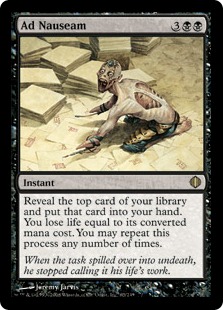 Banlist: "difference" is not bannable
Banlist: "difference" is not bannable
Some players prefer midrange slugfests, the combat step, and protracted duels. Other players want to drop Lantern of Insight and screw with your draws all game. Or win on turn three with Blighted Agent. Modern is designed to encourage that gameplay (unless Mr. Agent is doing it too consistently), so don't point your pitchforks at certain strategies just because they are no longer Standard-appropriate. This guideline supports net fun by allowing Modern players to choose from a bevy of deck-types and gameplay styles. If that means beating you with Pact of Negation's trigger on the stack after drawing 45 cards with Ad Nauseam, that's just Modern. Banlist talk often devolves into archetype hatred for unfair ramp, unfair combo, unfair control, etc. Stop hating and start accepting, because Modern is always going to be home to these strategies.
- Metagame: unconventional decks must be viable
You can't really play committed combo decks in Standard. You can barely play Plan B combo decks. The same goes for many graveyard strategies like Dredgevine and Grishoalbrand, prison decks like Lantern Control and 8Rack, toolbox tutor approaches like Kiki Chord, etc. Don't worry! Wizards wants these options to be available in Modern. Don't get salty on the Internet or to your gaming buddies about how certain kinds of older strategies shouldn't be acceptable in Modern. Modern is going to be their home for years to come and healthy metagames will showcase that diversity.
4. Not rotate, allowing you to keep a deck for a long period of time
There are two ways to read Forsythe's fourth guideline. Option one: he's just restating the format's non-rotating identity. If you're happy to leave it at that, scroll ahead to guideline #5. If you find that interpretation as boring as I do and want to live up to our close-reading agenda, here's option two: Forsythe might be positing a larger point about the importance of Modern stability and consistency.
 Banlist: keep decks intact
Banlist: keep decks intact
I'd bet no one at Wizards views the Splinter Twin ban as an artificial rotation like I do, but I'm pleased they admitted the Pro Tour shakeup connection in Forsythe's article. Following that acknowledgement, I believe Wizards knows how bans can dismantle decks, devalue investments, and drive players out of the format. Guideline #4 might suggest a deepened commitment to deck longevity in Modern, which further moves Wizards away from regular bans. This point is supported both in the Pro Tour section of Forsythe's article and in later format guidelines (see #9). Bans are sure to remain a Modern management tool, but in the spirit of preserving decks, they should be more surgical and far less frequent.
- Prices: investments should last
Standard rotates multiple times a year, forcing players to spend money on new cards every 3-4 months. Modern doesn't rotate at all, but the initial buy-in is much steeper. Although that Modern entry price is necessarily and understandably higher than Standard's (read Travis Allen's excellent breakdown on the MTG Price blog), this heftier investment should come at the benefit of security. If we read Forsythe as committing to stability generally, we should also read him as committing to deck value stability specifically. That is, the longevity of your deck and its longstanding value. If you spend money on a Modern deck, you should be able to keep and use that deck for a long period of time. Sure, the deck's dollar value might fluctuate due to inevitable reprints, but the basic investment will give you Modern tournament mileage for years.
5. Consist of cards that we are willing and able to reprint
I'm still not convinced format guideline #4 relates solely to Modern's non-rotating nature. That said, I'm 90% sure this fifth guideline is primarily a statement about Modern's separation from the Reserved List. Tom LaPille promised Modern as a format without Legacy's card availability problems, and Forsythe couldn't be more in conversation with that promise unless he had quoted LaPille directly. I'm giving two price-driven analyses here out of respect for this guideline's importance for future Modern finance.
 Prices #1: Modern is the non-rotating format
Prices #1: Modern is the non-rotating format
Earlier this year, Wizards announced Eternal Masters to the joy of many Eternal veterans. In that same update, they also revisited one of their oldest and most incendiary promises: "[Eternal Masters] will not contain cards from the Reserved List..." Cue the jeers and incensed Redditors. Writing months later, Forsythe's article continues that tradition, in one stroke reinforcing the Reserved List promise while also setting up Modern as the default non-rotating home. Forsythe's use of the word "able" is suggestive, implying Wizards is not "able" (or views themselves as unable) to reprint Reserved List cards. I'll let the actual and e-lawyers debate the legal merits of that position, but either way, we see a Wizards representative yet again promoting this stance. That's bad news for those who would see the List disbanded and great news for Moderners who want Modern to stay strong. As LaPille talked about in his own early Modern writings, Modern was designed as a non-rotating home for old cards, one that does not have Legacy's "card availability" problems. Here, Forsythe assures the community of Wizards' intentions to keep the Reserved List and, by extension, keep Modern. I'd be lying if I said I'd dislike an "Eternal" or "Unreserved" style of format, but I love Modern and it looks like the financial momentum is on our format's side.
- Prices #2: reprints matter
It's hard to support a non-rotating, reprint-driven format without actual reprints. Wizards surely knows this and I except we'll see an accelerated supplemental product schedule in 2017 and beyond. Despite the very real hurdles to mass-Modern reprintings (if you haven't read him yet, Travis Allen is still waiting), there is also a very real profit margin to be made here and an equally real demand for conservative, strategic reprintings. As Wizards keeps refining print-runs and optimizing their product release calendar, we should see Modern benefit from increased support. I'll be looking for this in 2017 when the new Modern Masters 2017 heralds more Modern hype---I can't think of a better place to make announcements about new Modern-themed products than the Modern Masters Grand Prix release weekend!
6. Have a diverse top-tier metagame featuring over a dozen archetypes
With format guidelines six and seven, we get two Modern missions that are almost explicitly banlist-linked. Six refers back to the "format-diversity" ban, defined by Wizards in most of its B&R updates: "We also look for decks that hold a large enough percentage of the competitive field to reduce the diversity of the format." Instead of analyzing this guideline as a new piece of information (we've known about it since the Pro Tour Philadelphia bannings and I mention it almost every ban cycle), I'm going to focus on a critical new detail we pick up in this short but deceptively insightful guideline.
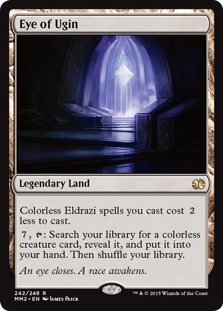 Banlist: Wizards' "top-tier" includes Nexus' Tier 1 and Tier 2 collectively.
Banlist: Wizards' "top-tier" includes Nexus' Tier 1 and Tier 2 collectively.
Maybe Wizards reads "Fixing Modern" articles and uses them as one of many datapoints to inform decisions. Maybe they don't. That said, I'm certain they don't use our tiering system to determine a deck's metagame position. Why would they? They have the population data, not just a sample. That said, readers frequently ask me how to translate Nexus tiers into Wizards' language. Now, we know: when Wizards talks about "top-tier" decks, we should consider all of the Nexus Tier 1 and Tier 2 contenders together. The Rosetta Stone in this translation is Forsythe's mention of "over a dozen archetypes." At Nexus, we've never had a Tier 1 with more than 7-8 strategies, despite the overall metagame being quite healthy. But if you combine Tier 1 and Tier 2, you easily meet the "over a dozen archetypes" benchmark and also tend to wind up with a healthy format. Going ahead, we'll use this 12+ decks in Tier 1 and Tier 2 criteria to guide our classification of Modern as healthy or broken. We'll also think about "top-tier" decks as those in Tier 1 or Tier 2, which is especially relevant when applying the turn four rule.
7. Not be dominated by fast, non-interactive decks (consistent kills before turn four are a red flag)
Speaking of which, the turn four rule returns! Just like guideline six invokes "format-diversity" bans, so too does guideline seven reference "turn four rule" violations. Most of what I wrote in "Understanding the Turn Four Rule" is still accurate, so there's no reason to retread the terrain too much. Indeed, with Summer Bloom banned following my application of the rule, I'm more confident than ever we have a good understanding of the rule's execution. That said, Forsythe uses an important word in this guideline which also relates back to one of the most misunderstood and misapplied elements of the rule. It's worth going over again.
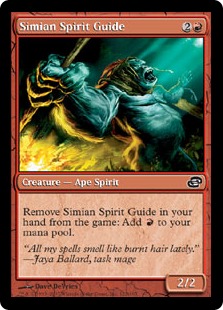 Banlist: fast decks are fine unless they "dominate"
Banlist: fast decks are fine unless they "dominate"
Almost every week like clockwork, some major Magic content website posts a sensationalist article about Modern bans. Out of respect for those authors (who otherwise write quality pieces), I'm not going to link to their recent fumbles, but that doesn't stop me from heading to the comment section to bring some perspective. Nine times out of ten, the area where other authors stumble is around the turn four rule because they forget the critical "top-tier" qualification. Puresteel Paladin Cheerios is one of my pet strategies, but Paladin himself doesn't need a ban because you had a rough FNM facing down the turn two Grapeshot. In this guideline, Forsythe's use of the word "dominated" reads to me as an indirect reference to the "top-tier" nature of turn four violators. If a deck is winning on turn three but not dominating, it's probably not top-tier, and is definitely not in the turn four rule crosshairs.
8. Be at a power level that allows some newly printed Standard cards to affect the format (we don't have other ways to introduce cards into the format, and we like it when cards or decks can transition)
In many respects, format guidelines eight and nine are the most interesting bullets on Forsythe's list because they are the newest. Points one through seven mostly suggest a mission we already knew, even if it's long overdue to see them condensed into one place. Eight and nine are much newer, and although we've seen hints of them before in scattered sources, Forsythe is now giving them official confirmation. Because guideline #8 shares so much with #2, I'll mix in some of those older points with newer ones about the beloved topic of Modern-targeted reprints and new cards.
 Banlist: again, don't worry about the power-level
Banlist: again, don't worry about the power-level
With Forsythe restating the Standard-to-Modern transition, I anticipate a number of readers rekindling their fears. Thankfully, there's no need to panic. Forsythe is very clear that only "some newly printed Standard cards" need to "affect" Modern, not all of them. Between Tasigur, the Golden Fang, Collected Company, Pia and Kiran Nalaar, and those wretched Eldrazi from the big (World Breaker) to the small (Eldrazi Skyspawner), recent Standard sets are largely accomplishing this already. By all current measures, Forsythe's announcement is all about decelerating bans and realigning Modern with its original mission, not pushing some sinister pack-selling agenda.
- Prices: reprints are unlikely to come through Standard
Mark Rosewater set off a mini-Modern firestorm with his comment about Modern reprints being generally too powerful for Standard. Like MTGGoldfish's SaffronOlive, I don't really buy this, but I'm willing to accept it as the current status quo until we install another one. That means high-demand reprints such as Goblin Guide, Snapcaster Mage, Liliana of the Veil, Noble Hierarch, and others are chained to supplementary products for the foreseeable future. This raises their price ceilings and promises higher card values going ahead, at least until 2017 when I believe Wizards will start making a more concerted (but still conservative) effort to tackle the price issue.
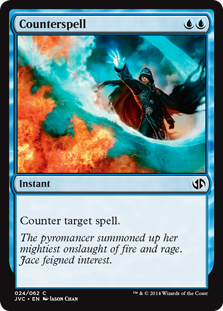 Metagame: format evolutions must pass through Standard
Metagame: format evolutions must pass through Standard
I want a Modern-specific feeder set as much as the next guy, but Forsythe uses this guideline to reassert Wizards' position on not bypassing Standard for the sake of Modern. I'm going to need to parse through that decision in a later "Fixing Modern" column, but for now I'm accepting it as gospel and making the best of what we have. As they say, when life gives you Clue tokens, make Emrakuls! Assuming Wizards sticks with this parenthetical disclaimer for the near future, we'll need to table discussion of reprinted Counterspell, Mother of Runes, Baleful Strix, and others until Standard's power-level changes significantly, or until this policy gets revisited. But don't lose hope entirely because every set invariably has a few cards to bring to the Modern table. Maybe the Liliana-themed Eldritch Moon will even get the black-based control mages their Innocent Bloods!
9. Have as small a banned list as possible that accomplishes all the previous goals
We've seen hints that Wizards prefers smaller banlists, but never such a clear, unambiguous declaration. The last time we talked about banlist size was Tom LaPille in "Welcome to the Modern World," admitting "this list is a lot longer than it was at the Community Cup" before qualifying, "We may have overbanned here, and if we did, we have plenty of time to go back and fix that." Since then, Wizards banned almost a dozen cards and released only six, for a net increase to the banlist. Looking ahead, I expect changes. Format guideline #9 suggests Wizards is much more attuned to the damage that large banlists and "ban mania" cause Modern, and future banlist management should reflect that.
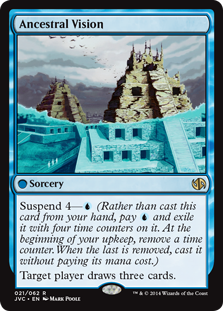 Banlist: freeing the innocent, delaying guilty verdicts
Banlist: freeing the innocent, delaying guilty verdicts
In Modern, a small banlist means two parallel changes: unbanning wrongfully-imprisoned cards and waiting on bans. It's possible Forsythe is secretly trolling us and intends on banning swaths of cards to fulfill his eight other guidelines, but this feels totally misaligned with the article's overall context. "Smaller banlist" is much more likely to indicate a conservative banlist approach, not an overzealous one. If so, this policy will initiate a gradual release for cards that are unlikely to harm Modern. We've seen a comparable unbanning approach in Legacy, and Forsythe's article suggests a similar trajectory in Modern. There aren't many cards left on the banlist that might fit in this category, but if it means an annual parole hearing for the preemptively banned cards like Stoneforge Mystic and Jace, the Mind Sculptor, I'm on board. As for bans, I'll just restate Forsythe's explanation from the Pro Tour section: "We'd rather let those deck evolutions play out over months on Magic Online or at store-level events, as that accelerated metagame pace often just means speeding up more changes to the banned list as well." This is the small banlist future we can look forward to.
Mission: Accomplished
Nine format guidelines, about 15 individual analysis points, and one coherent Modern mission. "Fixing Modern" has never been looking more promising and attainable. I'd be much more excited about all this if I had confirmation about some Eternal Masters reprints, a sneak peek of Eldritch Moon previews, or some more concrete evidence about the Lovecraftian mystery of Innistrad's madness, but I'll settle for a dose of optimism for now. Besides, with the Grand Prix weekend coming up on May 20 and a Star City Games Open just days away, I'll have plenty of data to occupy me until then.
Thanks for joining me today as we dissected these nine format guidelines and their future in Modern. As we confront other Modern policy and management issues, you can be sure we'll return to Forsythe's canonical work to help us understand format decisions and trajectories. If you have any questions about the guidelines or any interpretations of your own, let me know in the comments and I'll talk to you all soon. Join me next week as we make some last-minute preparations before the Grand Prix MAY-hem (oh yeah: the pun is back), and remember to stay in dialogue with the Modern literature as you take to the forums and comment sections this week.






Excellent article. I am hoping for a crucible of world’s printing in eternal masters – that price is ridiculous!
Happy to hear you enjoyed it! Crucible reprinting in EMA seems very likely; that’s the kind of joint Eternal and Modern card which is perfect for the set. I bet we see Chalice too.
As always I enjoy your well-reasoned and level-headed approach to my favorite format. I particularly enjoyed your commentary on the issue of reprints and encourage people to read the Travis Allen article you linked above. It certainly made me look at the reprint problem in a new light. However, I still would like to see the Zendikar fetchlands reprinted in standard at some point!
Also I don’t know how you’d quantify it but I’d just imagine that drafts sell way more product than standard and that standard is to draft as modern is to standard – a way to increase the useful life of some of the cards. I’ve always thought of draft and sealed as wizards masterstroke – a format that always moves current packs.
Draft is probably the major salesforce for Wizards, and it’s beloved by many. I’m pretty sure even Standard players do more trading and secondary market purchases than they crack packs.
Glad you like the read! Travis Allen did a great job with that one article, although I too think we’ll see more Zendikar fetchlands in a Standard set. Stoddard and Maro both indicated they weren’t inherently TOO problematic in Standard. The issue was pairing them with delve, Jace, the tangolands, etc. Too much mana-fixing and too much synergy. I suspect we’ll see them again in the nearish future. The profit margin is just too high for Wizards to pass up and it doesn’t cause as many problems as Allen suggests (other reprints, however, would).
A great article. I like your adademic aproach, how you analyse and breakdown the definitions brought on by wizards, and also your quantitative data analsys.
I request that you still continue to be a public watchdog on this subject and having a critical eye on Wizard’s actions. Actions speak lauder then words after all, but now we have at least gotten some words.
Is it your opinion that they should reprint more cards to make the format welcoming to new players? Or to not reprint to make sure staples remain far to high in pric for new players, so that staples do not loose value? I would like to hear your opinion on this matter based upon what Aron Forsythe put forward.
Great to hear that you enjoyed the piece! I’ll keep doing “Fixing Modern” style articles, especially around major Wizards decisions. For instance, you can bet I’ll spearhead a public outcry if Wizards screws Modern on the 2017 GP schedule, just as I’ll defend them if they release a good schedule and people get unduly upset.
For reprints, they 100% need to do more. These should be Expedition-style seeds in every Standard pack. We can call them “Modern Visitors” or something and every Standard set would have a few. This would encourage more players to open packs while not tanking prices of existing stock. Wizards should also have at least one Modern-geared supplementary product every year, whether it’s deliberately placed cards in Commander products or the every-other-year MM release.